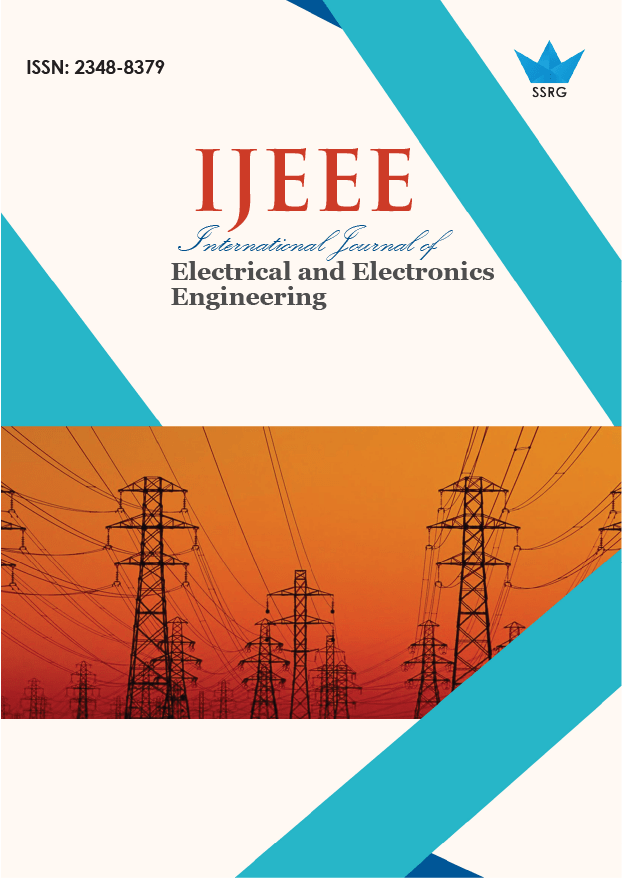Implementing The CS25-1 Algorithm for Multi-Way Distributed Blockchain Security

| International Journal of Electrical and Electronics Engineering |
| © 2025 by SSRG - IJEEE Journal |
| Volume 12 Issue 7 |
| Year of Publication : 2025 |
| Authors : C. Bagath Basha, S. Rajaprakash, K. Karthik, TKS Rathish Babu, Maha Yousif Rizgalla Sulieman, Rasitha Banu GulMohamed |
How to Cite?
C. Bagath Basha, S. Rajaprakash, K. Karthik, TKS Rathish Babu, Maha Yousif Rizgalla Sulieman, Rasitha Banu GulMohamed, "Implementing The CS25-1 Algorithm for Multi-Way Distributed Blockchain Security," SSRG International Journal of Electrical and Electronics Engineering, vol. 12, no. 7, pp. 253-263, 2025. Crossref, https://doi.org/10.14445/23488379/IJEEE-V12I7P118
Abstract:
Blockchain is a rapidly developing technology that has been widely known for its high data security features. Although it is mostly utilized to encrypt data in transit, the underlying processes tend to be misinterpreted by the public. In this paper, a new lightweight encryption scheme called CS25-1, inspired by small but secure algorithms like Salsa and RB20, is proposed. CS25-1 employs a six-step encryption and decryption process, designed to render information more secure yet still be effective. The process, also referred to as CS25-1, is thus: Create Two Secret Messages: Begin with the writing of two plaintext messages that are to be encrypted. Encrypt First Message: Each character of the first message is encrypted with a predecided secret code and then multiplied by four to add complexity. Matrix Mapping (First Message): The encrypted values are then placed within a matrix to create structural obfuscation. Encrypt the Second Message: The second message is encrypted using the secret code, followed by multiplication by four. Matrix Mapping (Second Message): The second group of encrypted values is mapped into a second matrix. Prime Key Division: A hidden prime number is employed subsequently to divide the values in each of the two matrices, providing yet another level of cryptographic hardness. The decryption algorithm proceeds to undo the steps in sequence to obtain the original plaintexts. This multi-layered approach enhances conventional encryption strategies by providing double-message encoding, matrix transformation, and prime-based division as collective methods of strengthening against brute-force and analytical attacks.
Keywords:
Decryption, Encryption, Performance, RB20, CS25-1.
References:
[1] Muhammad Nasir Mumtaz Bhutta et al., “A Survey on Blockchain Technology: Evolution, Architecture and Security,” IEEE Access, vol. 9, pp. 61048-61073, 2021.
[CrossRef] [Google Scholar] [Publisher Link]
[2] Suhyeon Lee, and Seungjoo Kim, “Blockchain as a Cyber Defense: Opportunities, Applications, and Challenges,” IEEE Access, vol. 10, pp. 2602-2618, 2022.
[CrossRef] [Google Scholar] [Publisher Link]
[3] Mohammad Wazid, Ashok Kumar Das, and Youngho Park, “Generic Quantum Blockchain-Envisioned Security Framework for IoT Environment: Architecture, Security Benefits and Future Research,” IEEE Open Journal of the Computer Society, vol. 5, pp. 248-267, 2024.
[CrossRef] [Google Scholar] [Publisher Link]
[4] Mubashar Iqbal, and Raimundas Matulevičius, “Exploring Sybil and Double-Spending Risks in Blockchain Systems,” IEEE Access, vol. 9, pp. 76153-76177, 2021.
[CrossRef] [Google Scholar] [Publisher Link]
[5] Ivan Homoliak et al., “The Security Reference Architecture for Blockchains: Toward a Standardized Model for Studying Vulnerabilities, Threats, and Defenses,” IEEE Communications Surveys & Tutorials, vol. 23, no. 1, pp. 341-390, firstquarter, 2021.
[CrossRef] [Google Scholar] [Publisher Link]
[6] Yongfeng Huang et al., “Smart Contract Security: A Software Lifecycle Perspective,” IEEE Access, vol. 7, pp. 150184-150202, 2019.
[CrossRef] [Google Scholar] [Publisher Link]
[7] Bagath Basha Chan Batcha et al., ”A Novel Security Algorithm RPBB31 for Securing the Social Media Analyzed Data using Machine Learning Algorithms,” Wireless Personal Communications, vol. 31, no. 1, pp. 581-608, 2023.
[CrossRef] [Google Scholar] [Publisher Link]
[8] Weiqi Dai et al., “PRBFPT: A Practical Redactable Blockchain Framework with a Public Trapdoor,” IEEE Transactions on Information Forensics and Security, vol. 19, pp. 2425-2437, 2024.
[CrossRef] [Google Scholar] [Publisher Link]
[9] Yong Wang et al., “Cloud-Assisted EHR Sharing with Security and Privacy Preservation via Consortium Blockchain,” IEEE Access, vol. 7, pp. 136704-136719, 2019.
[CrossRef] [Google Scholar] [Publisher Link]
[10] Zeeshan Zulkifl et al., “FBASHI: Fuzzy and Blockchain-Based Adaptive Security for Healthcare IoTs,” IEEE Access, vol. 10, pp. 15644-15656, 2022.
[CrossRef] [Google Scholar] [Publisher Link]
[11] Nathalie Tan Yhe Huan, and Zuriati Ahmad Zukarnain, “A Survey on Addressing IoT Security Issues by Embedding Blockchain Technology Solutions: Review, Attacks, Current Trends, and Applications,” IEEE Access, vol. 12, pp. 69765-69782, 2024.
[CrossRef] [Google Scholar] [Publisher Link]
[12] Oumaima Fadi et al., “A Survey on Blockchain and Artificial Intelligence Technologies for Enhancing Security and Privacy in Smart Environments,” IEEE Access, vol. 10, pp. 93168-93186, 2022.
[CrossRef] [Google Scholar] [Publisher Link]
[13] Shailendra Rathore, Jong Hyuk Park, and Hangbae Chang, “Deep Learning and Blockchain-Empowered Security Framework for Intelligent 5G-Enabled IoT,” IEEE Access, vol. 9, pp. 90075-90083, 2021.
[CrossRef] [Google Scholar] [Publisher Link]
[14] Kwame Opuni-Boachie Obour Agyekum et al., “A Proxy Re-Encryption Approach to Secure Data Sharing in the Internet of Things Based on Blockchain,” IEEE Systems Journal, vol. 16, no. 1, pp. 1685-1696, 2022.
[CrossRef] [Google Scholar] [Publisher Link]

 10.14445/23488379/IJEEE-V12I7P118
10.14445/23488379/IJEEE-V12I7P118